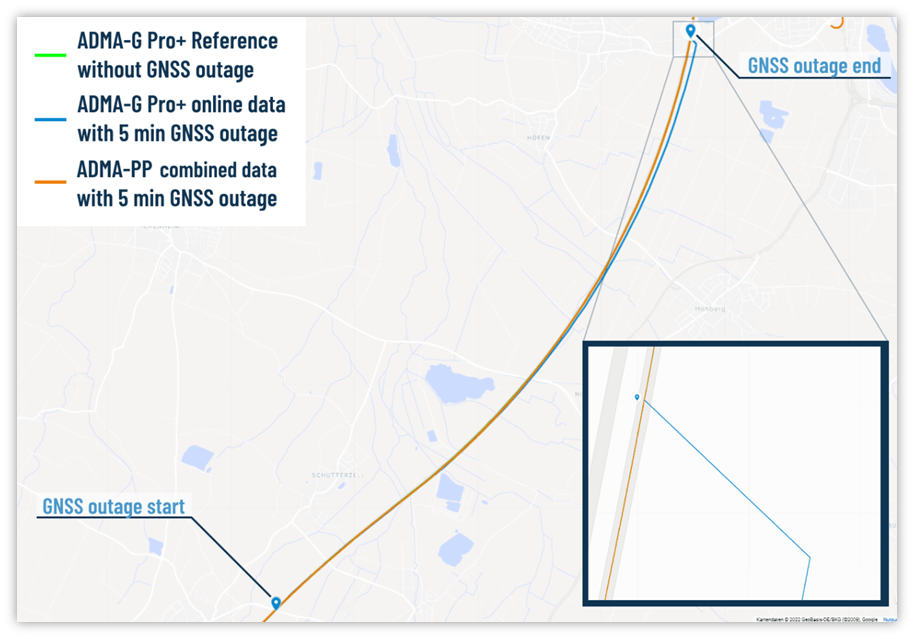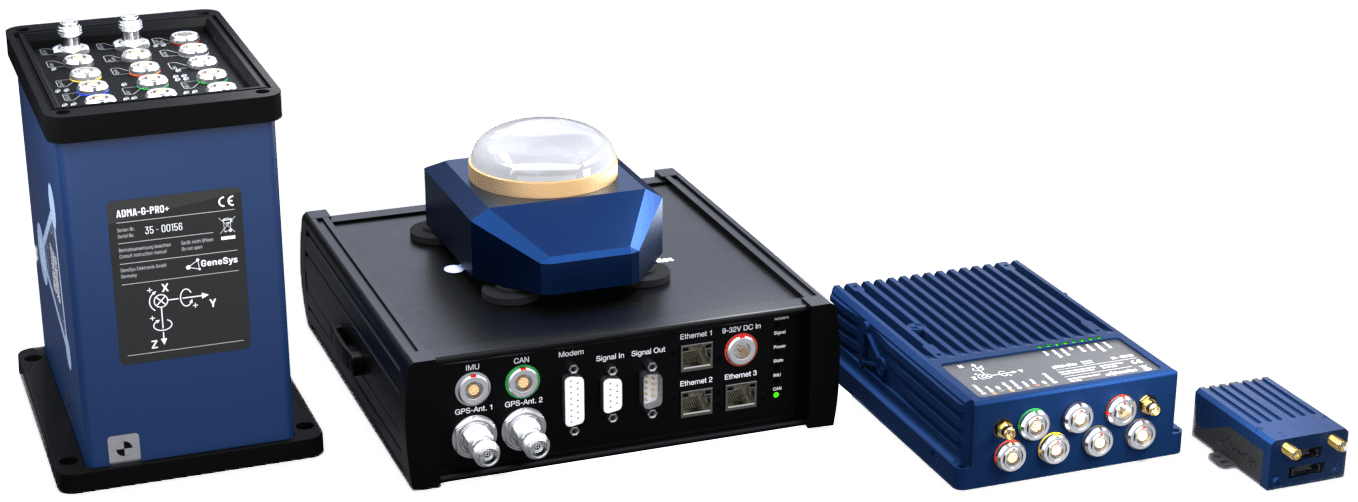
The Challenge
The increase in the variety of vehicles and the rising demands on advanced driver assistance systems (ADAS) and autonomous driving lead to ever higher development requirements. As a result, post-processing is playing an increasingly important role in the automotive industry. The precision of the ADMA is limited by the quality of the IMU and the duration of a GNSS outage. The performance of the system can be greatly improved through post-processing. In doing so, ADMA-PP further reduces the position solution drift during GNSS outage and provides a step-free solution. To achieve this, the ADMA-PP calculates the input data in the time domain forward and backward and combines both results.
Advantages of the ADMA PP
Signal optimization
The greatest benefit of ADMA-PP is the signal optimization. Because of the complex calculation algorithm, the position accuracy can be significantly improved by combining the navigation solution forwards and backwards. Another advantage is the compensation of position steps after GNSS reentry (e.g. after passing through a tunnel).
Offline RTK2 calculation through RINEX data
So-called RINEX data can be procured from RTK service providers. The ADMA-PP can improve the position accuracy to 1 cm 1 sigma even after a test drive. This means that the NTRIP or radio modem can be omitted in the test setup – but most importantly there are no RTK failures during post-processing due to the mobile radio network.
Subsequent modification of the ADMA configuration
Errors in the ADMA configuration can ruin the results of a test drive. With the ADMA-PP, all parameters can be adjusted afterwards.
Partial obsolescence of the initialization
The initialization drive to set up the Kalman filter is particularly difficult on public roads. A logic integrated in the ADMA-PP makes this initialization obsolete – more about this in the chapter “Operating principle”.
Extending capabilities such as Moving BASE and DELTA
Functional enhancements are possible with the help of ADMA-PP, such as DELTA Multi1 and Moving BASE2.
1 DELTA Multi: Distance calculation to any number of objects with a relative position accuracy of 1 cm 1 sigma. Online RTK correction data is required for each object. This enables a highly accurate absolute positioning solution to be realized.
2 Moving BASE: Distance calculation to any number of objects with a relative position accuracy of 1 cm 1 sigma. Online RTK correction data is not required here, accuracy is achieved by combining Hunter and Target ADMA pseudorange, carrier phase and Doppler measurements. However, no highly accurate absolute positioning solution can be realized.




